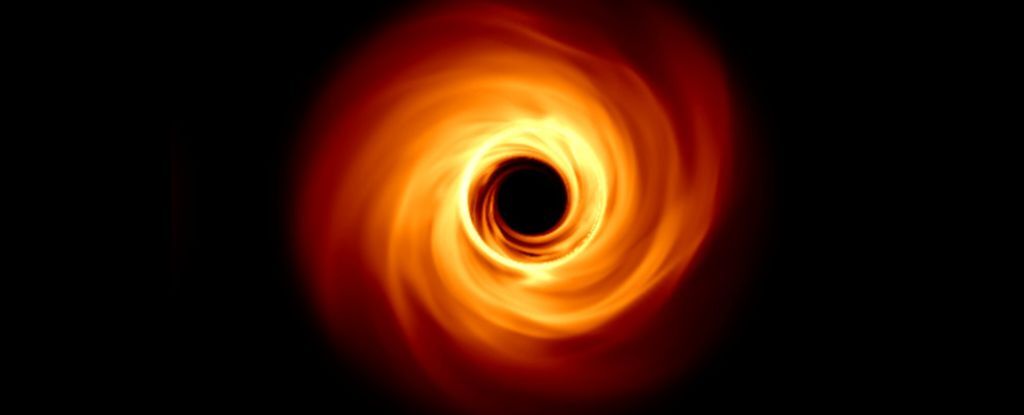
The colossal black hole at the center of the Milky Way, known as Sagittarius A* (Sgr A*), is spinning at a rate close to its theoretical maximum. This discovery is the result of a new method developed by astrophysicists to delve deeper into the mysteries of supermassive black holes using data from the Event Horizon Telescope (EHT).
The Event Horizon Telescope, a groundbreaking global collaboration, has spent years capturing the first direct images of black hole shadows. Initially, it imaged M87*, a black hole in a galaxy 55 million light-years away, followed by Sgr A*, the supermassive black hole at the heart of our own galaxy. These images, while remarkable, present challenges in interpretation, prompting scientists to rely on simulations to better understand them.
Revolutionizing Black Hole Analysis
To enhance the understanding of these cosmic phenomena, a team led by astronomer Michael Janssen from Radboud University in the Netherlands and the Max Planck Institute for Radio Astronomy in Germany employed high-throughput computing. They developed millions of simulated black holes, using this data to train a neural network to extract detailed information and identify black hole properties.
Their findings reveal that Sgr A* is not only spinning near its maximum speed but also has its rotational axis directed towards Earth. The glow surrounding it is attributed to hot electrons, and intriguingly, the magnetic field in the material around Sgr A* does not align with existing theoretical predictions.
Insights into M87* and Theoretical Implications
Meanwhile, M87* was also found to be rotating rapidly, albeit not as fast as Sgr A*. Interestingly, it spins in the opposite direction to the material swirling around it, suggesting a possible historical merger with another supermassive black hole.
“That we are defying the prevailing theory is of course exciting,” Janssen remarked. “However, I see our AI and machine learning approach primarily as a first step.”
Janssen emphasized the potential for future advancements, stating that improvements and extensions to the models and simulations are underway. The addition of data from the forthcoming Africa Millimetre Telescope is expected to further refine these findings and enhance the precision of testing the general theory of relativity in the context of supermassive compact objects.
The Role of Advanced Technology
This development represents a significant leap in the study of black holes, showcasing the power of artificial intelligence and machine learning in astrophysics. By simulating millions of black hole scenarios, researchers can now draw more accurate conclusions from observational data, a process that was previously limited by the complexity and scale of the data involved.
The use of high-throughput computing and neural networks marks a new era in space exploration, where technology not only aids in data analysis but also challenges and refines existing scientific theories.
Looking Ahead
The team’s methodology and findings have been detailed in three papers published in Astronomy & Astrophysics. As the scientific community continues to explore these new insights, the implications for our understanding of the universe are profound.
By the Numbers: The EHT’s first image of a black hole, M87*, was captured in 2019, marking a milestone in astrophysics.
With ongoing advancements in technology and methodology, the study of black holes is poised to unlock further secrets of the cosmos, offering a deeper understanding of the universe’s most enigmatic phenomena.






